Marcel van Marrewijk's Blog, page 92
January 31, 2018
Spargle is looking for a product marketing manager

Opportunity via spargle.nl
The Product Marketing Manager will be responsible for Retail Marketing end-to-end in Northern Europe. The responsibilities encompass defining our retail marketing strategy, closely managing partners (retailers and carriers), setting up educative and demand generating activities along all stages of the customer journey and implementing those. The role sits within the Northern European Hardware and Platform marketing team. It involves collaborating with regional and central marketing teams, and cross-functional partners in Hardware Sales, Business Development and PR.
Responsibilities:
*Manage Retail Marketing in Northern Europe, including offline and online marketing campaigns.
*Work with internal and external partners on campaign planning and execution.
*Identify opportunities to attract consumers’ attention and educate them.
*Launch and drive rapid adoption of new devices and features.
*Ensure a consistent and strong messaging along all stages of the consumer journey – from generating awareness through to driving sales and post-purchase experiences.
*Develop strong relationships with retailers, carriers and other ecosystem partners (e.g. SVOD companies), to effectively execute co-marketing activities.
*Monitor campaign results, analyse key metrics, and optimise campaigns to drive growth.
Requirements:
*BA/BS degree with 5-10 years marketing experience.
*Experience in retail and product marketing: ability to develop product strategy/positioning, customer and market insights, analyse campaign effectiveness.
*Strong network among retailers, good relationship builder
*Experience in project management. Track record of effectively delivering large-scale and/or multiple projects at one time in fast-moving environments.
*Demonstrated strong performance in prior roles, with increasing levels of responsibility and independence. Team player.
*Passionate about new technologies and consumer electronics – Excited about working in a fast-paced environment on the future of entertainment and computing
*Sharp analytical and detail-oriented skill with ability to clarify and summarize complex issues
*Superb communication skills, with the ability to comfortably interact with our partner’s executive management.
*Ability to speak and write in English and a local language fluently and idiomatically.
Location: Amsterdam
Curious?
Are you the Product Marketing Manager we are looking for? Surprise and inspire us with your motivation. We are curious about you! Please send your letter of motivation and your resume to Yannick Goossens at yannick@spargle.com Or for more information call: 035 747 07 47.
The post Spargle is looking for a product marketing manager appeared first on Seats2meet.
Implementing Social Capital in your day-by-day life

Seats2meet has been working with Social Capital for over ten years now. Since then we have learned the balance between social capital, how to optimize it and how to generate more. Beyond that, we have been observing the increasing value of it as the sharing economy grows as well. Unfortunately, the value of Social Capital is not as visible as cryptocurrencies for instance. But believe me, it is there. So here are a few tips on how to make use of it in your day-by-day.
Know your abundance
At Seats2meet we only share what we have in abundance. That means what we already have, and it’s not in use. So take some time to think, what are the talents and skills that you have that are not being put to use but could help people? Not only talents or abilities. The sharing economy has proven that you can share anything you have in abundance. You can share your stuff in Peerby, your extra workspace in your home on S2M for locals or a Sofa on Couchsurfing, your car on Snappcar and many other platforms.
What are your values?
You don’t have to share every abundance you have in your life. It’s ok to be willing to share your car, but not your extra bedroom, and the other way around. It’s also ok to choose who you are sharing your abundance with, to what purpose? At Seats2meet we share it with anyone, but with the condition that they are willing to share their social capital as well, to create connection and thus, transformation. So what is your purpose?
Spread the word
You don’t have to shout to the whole world. You can start small. Let your friends and family know what you want to share and offer the people you know that might need it. Seats2meet started with only one table with a bit more than 20 seats. Now, after ten years later, we facilitate more than 200 locations worldwide on sharing their abundance and provide thousands of workspace seats to coworkers, connections, and transformation. So don’t be afraid to start small, you never know where it is going to take you!
The post Implementing Social Capital in your day-by-day life appeared first on Seats2meet.
January 30, 2018
Enlarging the ecosystem: S2M welcomes UtrechtInc
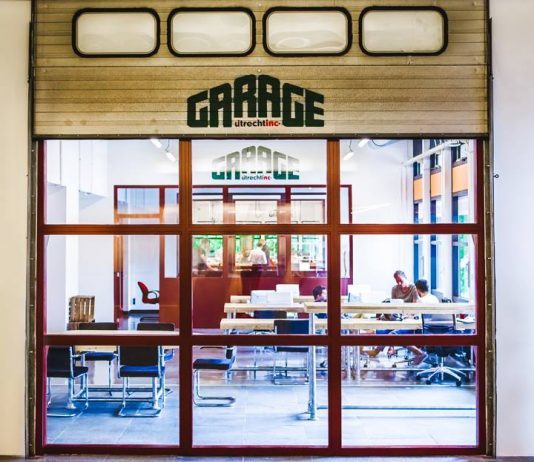
Every now and then the Seats2meet ecosystem welcomes a new location for you to connect, collaborate and grow in. Three weeks ago UtrechtInc became a part of the S2M ecosystem, and we became of theirs. It’s the colliding of two ecosystems, which just make a bigger one. So let me tell you a little bit about UtrechtInc and what you can find there.
What is UtrechtInc?
UtrechtInc is a coworking space, accelerator, and incubator located at the Utrecht Science Park. The founding partners are Utrecht University (UU), University of Applied Sciences Utrecht (HU) and University Medical Center Utrecht (UMC Utrecht).
As an accelerator and incubator, they work mostly with tech startups in the areas of healthcare, sustainability, and learning. And they do it quite well; from the 170 startups that have supported 65% of them are alive and kicking. They do that with a mix of great mentoring using the lean startup method and by being a matchmaker to a great network of experts, potential customers, students and investors.
Who is in UtrechtInc?
Throughout the 8 years since UtrechtInc operates they were the place of birth of several great startups. In their ‘graduates’ page you can find SnappCar, AFAS Personal (Yunoo), Argen-X, Channable, Senfal, and many more. You can check them all here. Right now there are several newborn companies going through the program, and you can see a complete list of them here.
Scientists, entrepreneurs and you.
Most of its occupants are either scientists or entrepreneurs. Both complement each other. But there is a lot of other knowledge that is welcome. Such as developers, marketers, designers; the list goes on. You can now book a workspace there for social capital and be surrounded by a variety of startups that are looking forward to hearing from you, and from which you can also learn a lot from. And who knows? Maybe collaborate on other levels. After all, we believe the future lies in collaboration.
You can book a workspace here.
You can apply for their startup program here.
Interested in getting updated on startup vacancies? Send an email and join their Pro-‘s & Co-founders Pool.
You might also be interested in the many events they host, take a look at their calendar.
The post Enlarging the ecosystem: S2M welcomes UtrechtInc appeared first on Seats2meet.
January 29, 2018
Decentralize everything!

OK what if … What if the world wasn’t ruled by only a small minority of people and companies. What if the world was a more honest place? For that we either need more honest, caring and sharing people. Or we need a different system. In this post we explore the possibilities of the latter. We look at the options of decentralization. And especially at the blockchain as a driver for that.
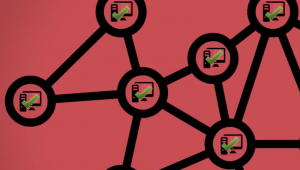
Start with the basics
We have to start at the beginning because we know that this is a complex system. And we know that adoption of the blockchain starts with explaining and understanding. The blockchain demystified is a good starting point. Learn the power of a decentralized, trustable system of transactions and rules.
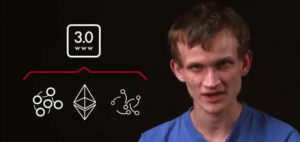
Blockchain as a starting point for a new internet
OK, now be prepared to dive deep. But do that in the knowledge that it is still early days for this new technique. It is still in its infant stage. It is a promise that can have a big impact, but we don’t know what the future will bring. Vitalic Buterin is the founder of Ethereum. At its simplest, Ethereum is an open software platform based on blockchain technology that enables developers to build and deploy decentralized applications. Buterin thinks that Ethereum plus some other technologies can bring us a more decentralized internet that puts control back in the hands of the user.
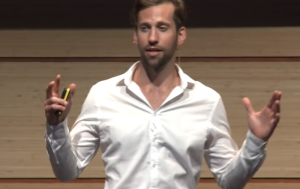
The future firm is open, smart and collaborative
But what other stuff can you do with something like Ethereum? Well, take Colony.io for example. That initiative believes the future of organizations is open and without classical structures. It’s building an infrastructure to support that: “A colony is a new kind of internet-based organization. It could be a community project, a company, or a non-profit — your imagination is the only limit. Every colony has its own token. You earn tokens by doing work. The more tokens you hold, the more of the colony you own. Tokens let you stake your ownership on your good judgment when proposing tasks, or claiming someone should be paid.” Colony believes the future of the firm is open, smart and collaborative and develops a system to support that, as co-founder Collin Vine explains.
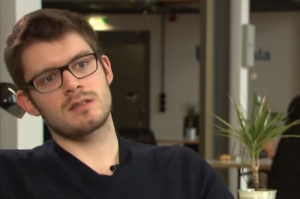
A nation on the blockchain
If you can form a new kind of organization with smart rules, reputation management and decentral decision making, you can re-organize society as well. That’s the idea behind Bitnation. ‘Bitnation is D.I.Y. governance.’ It is ’the world’s first decentralized, borderless virtual nation’. Bitnation is designed to disrupt the nation-state oligopoly through offering more convenient, secure and cost-efficient DIY governance services including security and dispute resolution. Erik Vollstädt is one of the co-founders of Bitnation. See his explanation.
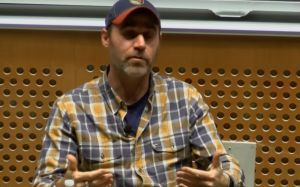
Fair rights to the artists
But let’s be honest, Bitnation is far away. Let’s look at stuff that might be closer to home. To the music industry for example. It’s not that long ago that – as an artist – you needed a record company to get your sound to an audience. Because a record company had access to media, to distribution channels, to recording facilities. That changed a lot. It is now relatively easy to record and distribute digitally. But this is only a part of the story. What if you could use the blockchain to make sure the rights of music are where they belong: decentral, with the artist. And what if the artist could use the blockchain to produce ’digitally smart songs’? In that case, the artist gives others the right to use songs for certain use cases, for a certain amount of time, etcetera. And an artist could lay down in the blockchain that its tunes can’t be used for political rallies fr example. The blockchain can give back control to artists, Benji Rogers from dotBlockchain believes.
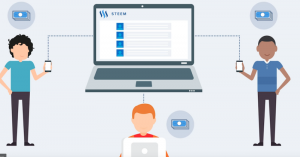
Steem.it: rewards for all
There are examples of the blockchain already working in the music industry. But they still are pilot projects, prototypes. Let’s finish off with successful decentralized media initiative Steem.it. And look beyond the media bit. Because Steem.it is an example of how you can reward all stakeholders in an initiative, the active and the passive, how you can work with a loose structure of influence depending on the role you play, and how active you are. That can be a model for new organizations too … Steem.it has rewards for all involved: the creator, the curator, the consumer, etcetera!
OK friends, we didn’t talk about cryptocurrency today, of course, bitcoin and other cryptos are examples of decentralized money as well. But if you want to know more about cryptocurrency and the blockchain have a look at the online dossier of The Innovation Station, we promise: you won’t find a better collection of videos on this subject!
The post Decentralize everything! appeared first on Seats2meet.
January 28, 2018
Houden blockchain platformen rekening met publieke waarden? | Rider (of PvdA?) klaagt Deliveroo aan | Amsterdam passeert Den Haag
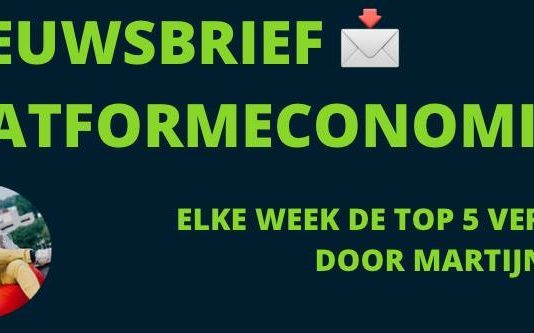
In het leven kun je niet alle kansen die voorbij komen oppakken. En soms is dat best lastig. Deze week kreeg ik vanuit mijn ‘Young European Leader’ rol de vraag of ik mij wilde inschrijven voor een leadership program in New York vanuit de Obama Foundation. Een kennismaking met Barack himself was (vanzelfsprekend…) onderdeel van het 10 maanden durende programma. ‘Helaas’ ben ik nu met zoveel andere interessante dingen bezig en ben ik ook erg gehecht aan een goede work/life balance met mijn gezin. En heb ik bedankt. Kan niet alles hebben 
January 24, 2018
Vacature frontoffice medewerker
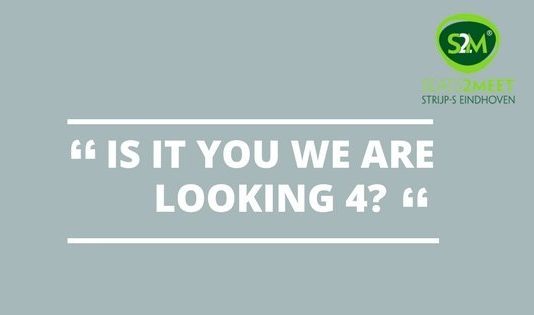
Opportunity by Seats2meet Strijp-S
Januari 2018: Op zoek naar een front office medewerker
Als host ben je het eerste aanspreekpunt voor alle bezoekers bij Seats2meet Eindhoven Strijp-S. Met jouw flair, eigenheid en gevoel voor gastvrijheid zorg je ervoor dat iedereen zich welkom voelt op onze locatie.
Je start voor ongeveer 24 uur per week. In een dynamische omgeving op Strijp-S, waar iedereen wel zou willen werken. De sfeer binnen Seats2meet Eindhoven Strijp-S is informeel, gastvrij, gezellig, ondernemend en stimulerend. Wij zijn ontzettend servicegericht en wij denken op alle niveaus met elkaar en onze klanten mee.
Marcel Nicolaas, een van de drie eigenaren vertelt wat S2M is en waar we naar op zoek zijn.
Meest voorkomende werkzaamheden
• Hartelijk te woord staan van onze gasten; aan de receptie, aan de telefoon en online;
• De vraag van de klant perfect omzetten naar een goed onderbouwde prijsopgave waar de klant graag ‘ja’ op zegt;
• Secuur en volledig alle informatie verwerken in ons offerte- en boekingssysteem;
• De opstelling van vergaderzalen inrichten naar de wensen van onze gasten, nadien opruimen en klaarzetten;
• Helpen met het opstarten van bijeenkomsten en installeren van beeld en geluid;
• Het kan voorkomen dat we ’s avonds en in het weekend gasten over de vloer hebben. Doordat we flexibel zijn, zorgen wij natuurlijk dat er dan altijd iemand is.
Opleidings- en werkniveau
• HBO denkniveau, vloeiend Nederlands en Engels in taal en geschrift;
• Beheersing van Word en Excel;
• Actief op Social Media, met name Linkedin. Ook kennis van Instagram is fijn, maar geen vereiste.
Persoonlijkheid en soft skills
• De locatie Strijp-S heeft een geheel eigen cultuur waar je in moet passen Onze cultuur is namelijk zeer bepalend voor de beleving van onze gasten.
• Wij zoeken een vooruitdenker, een meedenker en achteraf beschouwer. Belangrijk is dat je zelfstandig kunt werken in een zelfsturend team.
• Je kunt commercieel denken en weet hoe je compromissen moet sluiten. Strategisch en oplossingsgericht handelen wordt erg gewaardeerd.
• Wij houden van iemand die easy going is, humor heeft, open en spontaan is en om kan gaan met hectische momenten.
• Wij vinden het erg prettig als je graag initiatieven neemt en feedback kan zien als Omdenken.
Bij Seats2meet Eindhoven Strijp-S maak je onderdeel uit van het waardenetwerk dat steeds weer groter wordt. Je draagt daar zelf je steentje aan bij en je geniet ook van de kansen die dat jou zelf biedt. In je eigen werk, jouw talenten en interesses.
We ontvangen graag jouw motivatie in een korte video-opname en cv. Dit kun je sturen naar helma@s2mstrijps.nl
The post Vacature frontoffice medewerker appeared first on Seats2meet.
January 23, 2018
Remote Year is looking for a Sales Trainer

Opportunity via WeWorkRemotely.com
Remote Year
Remote Year brings together communities of interesting professionals, entrepreneurs, and freelancers from across the globe to spend a year working, traveling, and exploring 12 cities around the world. Spending one month in each location, communities connect with local cultures and business ecosystems, forming lifelong, borderless personal and professional relationships along the way. Together we will shape the future of work.
Role Description
We’re looking for an experienced Sales Trainer to educate and train our growing sales team ensuring our reps have the knowledge of the Remote Year product, systems, and processes. Working closely with our Director of Sales Operations, Head of Admissions and Head of Sales, our Sales Trainer will be responsible for executing on the Remote Year sales effectiveness strategy. You will bring your expertise in creating our sales onboarding training and ongoing curriculum for our entire salesforce – touching B2B and B2C Reps, Account Executives, and Customer Success Executives. The Sales Trainer will also be responsible for designing and conducting monthly classes with programs designed to ramp up new sales hires and dedicate specific tracks for each sales team. You’ll be a true sales coach with a passion for process and helping others thrive in an autonomous workplace. You’ll drive the statregy towards developing and mentor a team of smart, talented, and passionate sales representatives.
Responsibilities:
Develop a deep understanding of our sales organizations procedures, practices, processes, products, systems, technology, and culture to incorporate into training initiatives for each and every salesperson at Remote Year.
Sales Training – build out a curriculum of formal and informal training sessions covering new hire sales training, product launches, sales skills training, ongoing skill development, sales boot-camps, internal process updates, etc.
Sales Methodology & Onboarding – after learning the sales methodology yourself, build an effective onboarding and ongoing training program to ensure the continuous development of our sales force.
Gather metrics and analyze data to assess sales organization-wide developmental needs to drive & support proactive training initiatives.
Actively search, creatively design and implement effective methods to educate, enhance performance and recognize performance.
Prioritizes coaching and performance management efforts to have the greatest overall impact on the business.
Identifies deficiencies in skills among sales associates, and work with Management teams to improve individual’s capabilities through coaching, development, and training.
Builds peer support and strong internal-company relationships with other key management personnel.
Required Qualifications:
Minimum 1-3 years building sales training and curriculum programs from scratch, particularly for distributed sales teams.
Previous Leadership experience aligning with the business to identify emerging training needs (re: sales process and/or technical); designing and implement effective learning programs, often working with senior stakeholders.
Strong presentation and project management skills.
Solid understanding of learning tools and platforms, salesforce, project management and sales content creation.
Strong verbal and written communication skills.
Able to perform at a high level, in a fast pace, start-up work environment.
Outstanding analytical, problem-solving, organization, prioritization and multitasking skills.
A flawless record of personal and professional integrity.
Preferred Qualifications:
Bachelor’s Degree from an accredited institution in Business, Communications, or Marketing.
Experience with fully distributed workforce.
Experience in an inbound sales environment.
Experience with experience product sales.
Experience with consultative sales approach.
Knowledge of Sandler Sales Methodology.
Go to weworkremotely.com to apply
The post Remote Year is looking for a Sales Trainer appeared first on Seats2meet.
More About: Nature

A Story About Conservation, Restoration And Reforestation
The study of nature, from plants and soil, to humans and wildlife has always played an important role in the field of science. As humans we have a huge impact on the planet, more often than not, in a negative sense. It has been estimated that by 2050 the Earth’s human population will exceed 9 billion. Where does the food comes from to feed all those people? Where do they live? How can they coexist without destroying the habitat of many animals or natural resources? And how will their lifestyles impact the climate change?
Past generations have already voiced their concerns about nature’s well-being and united in organizations such as the World Wildlife Fund and Greenpeace. Although they do an excellent job and have saved many species from extinction, this More About will focus on the initiatives and projects by (local) universities, ambitious entrepreneurs and inspired individuals from all over the world working to conserve nature’s treasures for a brighter future for generations to come.It will discuss four areas of conservation:
Air conservation
Water conservation
Forest (and soil) conservation
Wildlife conservation
And continues with:
Fighting the industry: Fashion
Air conservation
While some governments are looking into to problem of ignoring CO2 emissions, by putting excesses into the ground, other countries and companies worldwide are looking at possible solution for this growing problem. Think of Costa Rica which aims to be the first neutral country in the world by 2021, the companies Carbon Engineering and Opus12 who use CO2 to synthesize clean transportation fuel and this Indian initiative which is turning CO2 emissions into baking soda. There’s even a company that is experimenting with street lights that absorb CO2 and emit oxygen, while designer Daan Roosegaarde creates smog-eating bicycles and buildings and Green City Solutions plants installation with moss cultures to absorb air pollutants! And last but not least, there are also initiatives trying to make consumers aware of their choices and how they could reduce their carbon footprint (WorldBeing).
Water conservation
About 0.6 billion kilo of trash enters the oceans each year, much of which only existed for the past 60 years or so. You immediately think of garbage, but don’t forget oil spills, sewage disposal and fertilizer from farms. It forms an immediate threat to wildlife and ultimately humans, who for example eat contaminated fish. Luckily, there are many companies looking for a solution. The most famous must be the young Dutch inventor Boyan Slat who at the age of 18 pitched his idea for an innovative ocean plastic clean up system to the world. However, there are some notable other solutions, such as this Protei robot which is an open source, wind-powered sailing robot cleaning oil spills and the Seabin project which is a device that is installed in ports and intercepts floating debris.
Forest (and soil) conservation
With an ever-expanding global population, people need more room for expansion and a vast supply of food. This often leads to deforestation, where trees are cleared to create farmland, housing or used for fuel. It’s an immediate threat to wildlife in terms of habitat and biodiversity, and it could also lead to soil erosion. There are four types of solutions helping the conservation of forests:
innovative solutions that help to rebuild forests (in unexpected places): Biocarbon Engineering’smission is to plant 1 billion trees in a year using drones. Afforestt has developed a technique to create native forests in about ten years (and shares its models with the world). Growboxx has developed a way to plant trees in arid areas, using 1 liter instead of the usual 10 liters.
monitoring and prevention of illegal logging:there are many examples of communities and institutions which use drones to protect (rain) forest, such as the Rainforest Airforce in Peruand Fediquep in Peru battling oil companies. The Global Forest Watch however, using satellite data to monitor forests in real-time. This nifty tool is free to use for everyone(!)
new growth methods in agriculture that don’t rely on large patches of soil: while rural Kenya is embracing ‘climate-smart’ agriculture, an aquaponics farm in Florida is growing plants without soil and AeroFarms has developed vertical farms.
creating awareness for deforestation: the online community Tree Supporter offers to plant trees for watching videos on their website, while TreeConcert visualizes the problem with an interactive installation in the middle of the Berlin.
Wildlife conservation
Everybody knows the World Wildlife Fund or other wildlife organizations; they have done some amazing work in the past. However, they can’t have eyes and ears everywhere to ensure the well-being of all animals around the world. They need help in tracking animals in distress, preventing poachers and protecting natural habitat from other influences. You can imagine technology plays a large part in this, look at the International Cooperation for Animal Research Using Space (ICARUS) for example, which uses satellites to observe global migratory movements of animals and might help preventing epidemics to spread. And what about drones helping to stop poaching in South-Africa? When looking at sea life, RSE’s Guardian robots can help us get rid of a huge Caribbean threat: the invasive lionfish and the Mote Marine Lab has discovered a new method to regrow coral reef in a much faster rate through a process of microfragmenting. Nevertheless, the latest technology is not always the answer, as the young Richard Turere demonstrates in his talk on how he made peace with the lions threating his community.
Fighting the industry: Fashion
To end this More About: Nature, we’d like to shine a light on how a specific industry could reinvent itself to reduce its pressure on nature. A rather new phenomenon in this industry is ‘fast fashion’, which is all about manufacturing clothes quickly and cheap. It dramatically shortens fashion cycles, while increasing the stress on our water supply, emitting more greenhouse gasses and creating more waste. Below you will find a nice overview of some previous Global Change Award winners, an innovation challenge by H&M which aims to promote a more circular fashion industry:
Orange Fiber – recycles citrus waste to create sustainable textiles
RAW for the Oceans – is a jeans collection from recycled ocean plastic
Polyester Digester – created a microbe that recycles waste-polyester
Tjeerd Veenhoven – grows textile fiber under water with algae
Manure Couture – uses cow dropping to create a biodegradable textile
Must-watch
Besides the videos mentioned above, there are many other great videos on Nature, conservation and innovations. Here’s a selection of other videos that didn’t match any of the categories above, but are worth your time:
Astroscale – we’re already polluting space, here’s a way to clean up space debris
Tornado in 360 – why not watch storm chasers at work, in 360 degrees!
Google Earth VR – stroll, fly or teleport all over the world
Plastic Bank – turns plastic into a currency
Watch more Nature videos.
The post More About: Nature appeared first on Seats2meet.
January 22, 2018
How to use technology to live off-the-grid
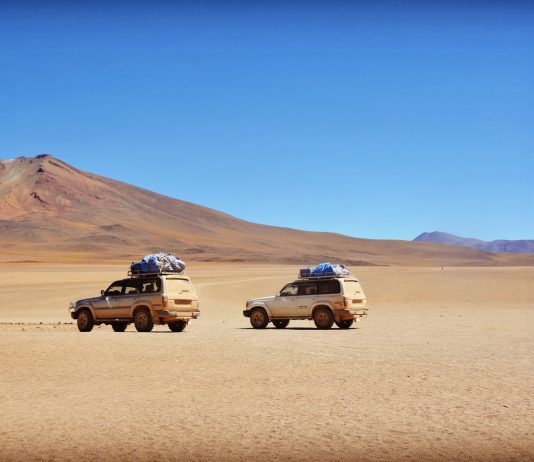
Would it not be great to live a life without any kind of dependency on governments or large corporations for water, food, products, internet or even healthcare? To live truly off-the-grid? Even if you are not a billionaire?
More and more, technology is making it possible to live self-sufficiently. A new autarky so to say. The Innovation Station has selected some great examples. Check them out!
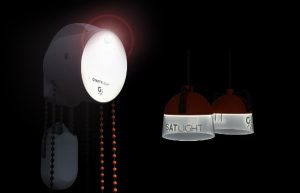
Just hook it up!
Probably the best thing to start with is energy. Despite investments in large power plants, both renewable as traditional, it is already possible to produce the energy one needs by one’s self. In rich countries, solar panels or solar roof tiles are a good option, but there are also great options for people that do not have much money at all. Like GravityLight, that only needs gravity to create power.
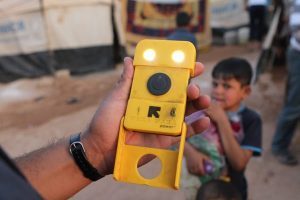
Energy on the run
Another great solution is WakaWaka. What better example than a refugee camp to demonstrate both the need for and the application of affordable mobile power. Like in this camp for Syrian refugees.
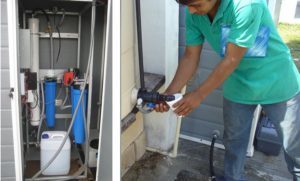
Affordable and available
PV Pure is an MIT project that uses solar power to create clean water. It is built with low cost and commercially available components and can be operated and maintained by a local community.
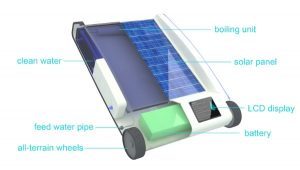
Even salt water
Most of the water in the world is salt water and therefore not fit to drink for us human beings. So what it would be possible to turn salt water into fresh water? The process of desalination is an old technique that is used in many places but usually on an industrial scale and at a rather high price. Start-up Desolenator has made a solution that can turn any kind of polluted and even salt water into fresh water using solar energy.
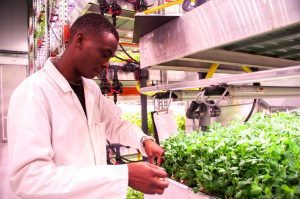
Local, local, local!
Once water and energy are in place, it is time for food. Why transport ingredients for a meal (or the meal itself) over hundreds of kilometers when it is possible to produce it around the corner. Like they do at GrowUp Urban Farms. They produce sustainable fresh fish, salads and herbs in cities using a combination of aquaponics and vertical growing technologies.
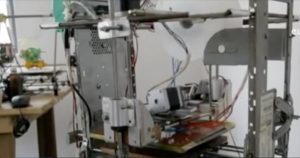
Build it from the scrap
Producing food, water or energy requires equipment and that usually means maintenance and broken parts. Luckily, 3D printing is here. There are many 3D printers for sale or one can use services like 3DHubs to find one to use in one’s vicinity but it is also to possible to build one one’s selves. Like this one that was built completely from scrap.

Fill me up
A 3D printer, however, needs filament to operate. Again, instead of importing this, a way better solution is to turn plastic waste into filament and use this to produce all kinds of new products. Exactly what Reflow Filament does.

Customised and on demand
FabRx Printlets look like candy and that is no surprise. The company turned a Magic Candy Factory 3D printer into a machine for pill production. This is a first step towards on demand and personalized medication. Soon one will be able to print pills in the shape one likes with the doses and ingredients tailored to one’s specific needs.

Internet without internet
Most of the off-the-grid technologies require communications. Internet. One needs to find recipes, information, blueprints. But what if the internet is down? Or if the internet is controlled by the government or limited in other ways. In that case, a mesh network could be a solution.
The post How to use technology to live off-the-grid appeared first on Seats2meet.
January 21, 2018
The potential commodification of workers | Durven workers in de platformeconomie nog te staken? | Heeft BlaBlaCar nog interesse in de Nederlandse markt?

Afgelopen week weer mooie stappen in het onderzoek naar Platform Coöperaties gemaakt (mijn eerste model-in-aanbouw is een feit) en een presentatie bij Shell mogen geven over de mogelijkheden van Crowdsourcing. Mooi om te zien hoe digitale tools letterlijk werelden met elkaar verbindt en mensen buiten hun eigen bubbel brengt. Vandaag reis ik af naar Brussel voor een event over arbeid in de platformeconomie. Benieuwd welke inzichten ik daar op ga doen. Deze week heb ik weer 5 mooie stukken gevonden en voorzien van mijn gedachten en duiding. Heb je zelf interessante of discutabele stukken voorbij zien komen: stuur ze gerust door. Fijne week!
Platformeconomie top 5
Wie neemt vandaag nog een vreemde mee? – AD – Blendle
Deze week was het in de chaos van de storm mooi om te zien hoe a) mensen nog niet hun gevoel voor solidariteit zijn verloren (dit hoor je vaak in de media, ik geloof er ook niets van) en b) de kracht van social media in het verbinden van mensen. De hashtag #stormpoolen was trending en via deze hashtag wisten vraag en aanbod van ritjes elkaar goed te vinden.
Op de vraag ‘waarom’ mensen elkaar opeens zo massaal gingen helpen wordt in dit stuk en ook in andere artikelen ingegaan. In een ander stuk werd de aanname gemaakt dat een lifter normaal zelf de keuze maakt om te gaan liften (en je daar dur niet zo solidair mee hoeft te zijn) en dat het ‘slachtoffer’ zijn van een dergelijke situatie de solidariteit kan verklaren.
In dit bijzondere moment is er één platform dat een enorme kans heeft laten liggen: BlaBlaCar. Dit platform dat vraag en aanbod van lifters linkt, werd door sommige mensen ook tijdens de storm gebruikt, maar heeft zelf niet actief op deze gebeurtenis ingespeeld. En dat is, en nu spreekt de oud markteer en branding expert, dé gemiste kans van het jaar. Want hoe mooi zou het zijn geweest als BlaBlaCar actief in de conversatie was gestapt, een aparte storm pagina op de Nederlandse pagina had gestart, voor één dag de commissies had geschrapt en zo als de grote redder uit de bus én in de media zou zijn gekomen?
BlaBlaCar had uit deze stormdag het volgende kunnen halen:
een enorme berg PR: door zo sympathiek in te springen op een actualiteit is een garantie voor krantenkoppen;
branding en naamsbekendheid;
een enorme toename van het aantal profielen (hoewel het dan wel de vraag is wat je daar op de langere termijn aan hebt);
in één keer hét boegbeeld van de deeleconomie in Nederland en daarmee ingangen in politiek en bedrijfsleven.
Het was allemaal zo eenvoudig geweest. Waarom we die dag niets van BlaBlaCar hebben gehoord? Ik vermoed dat BlaBlaCar er achter is gekomen dat Nederland helemaal niet zo’n boeiende markt is voor het bedrijf. De afstanden die mensen rijden zijn relatief kort (dus de kans klein dat ze extra gedoe op hun hals halen door iemand mee te nemen tegen een geringe vergoeding), het Openbaar Vervoer behoorlijk goed en aardig betaalbaar en daarmee dus alleen interessant voor ritjes tussen grote steden of buitenlandse steden als Berlijn, Brussel en Parijs.
Onlangs las ik een aantal artikelen waarin duidelijk naar voren kwam dat de pijlen van BlaBlaCar nu op Rusland gericht zijn. Het was in 2016 zelfs de verwachting dat Rusland in 2017 dé grootste markt voor BlaBlaCar zou zijn. Wat dat betreft lijkt het er op dat de Nederlandse markt niet interessant is voor carpool platformen. Totdat de zelfrijdende auto er is natuurlijk, maar daar zal een VC niet op gaan wachten….
Do platforms like Uber empower or exploit workers? | Platform Strategy – by Sangeet Paul Choudary
Wanneer het gaat om de technische en strategische aspecten van schaalbare platformen, dan is Sangeet Paul Choudary iemand die je echt moet volgen.
In dit stuk geeft hij met een framework duiding aan de variabelen die er zijn die er toe leiden of een platform zijn workers wel of niet uit kan buiten. Natuurlijk valt er per punt nog een hoop over te discussieren, maar het is een mooie basis.
Hij start met het benoemen van 3 functies van platformen:
Match workers with demand.
Provide a common set of tools and services that enable the delivery of work in exchange for money or other compensation.
Set governance rules based on which good actors are rewarded and poor behaviour is discouraged.
Vervolgens bespreekt hij ‘The potential commodification of workers’ in een ‘five-factor checklist’:
Nature of work;
Price setting;
Ability to encourage repeated exchange;
Network structure;
Structure of the reputation system.
Airbnb wil overkoepelende overeenkomst met gemeenten sluiten | Het Financieele Dagblad
Afgelopen week was er een interessante (maar brede) hoorzitting in de Tweede Kamer over de deeleconomie. Mocht je de tijd hebben, dan is het zeker interessant om a) de ingezonden Position Papers te lezen en via ‘Debatgemist’ het hele debat terug te kijken.
In dit stuk uit het FD wordt vooral de focus gelegd op de meest controversiële speler aan tafel: Airbnb. Uber had helaas afgezegd en rondom de andere platformen die aan bod kwamen is niet veel discussie. Opmerkelijk vond ik de wat cynische toon van de auteur van het artikel, die het blijkbaar bijzonder vond dat Bo de Koning van Airbnb zich omschrijft als ‘public policy manager’, terwijl hij dit liever ‘lobbyist’ noemt en dat zij tijdens het debat niet inging op vragen over de winstbelasting . Welkom in de corporate wereld.
Al met al lijken steeds meer partijen het er over eens te worden dat:
Nieuwe innovatieve platformen niet direct moeten worden dichtgetimmerd, maar er ruimte moet zijn om te experimenteren. Zonder naïef te zijn uiteraard;
De platform (r)evolutie een niet te stoppen beweging is;
Er per geval moet worden gekeken wat de impact van een platform is en wat en de mogelijk negatieve bij effecten zijn;
Regulering landelijk moet worden neergezet.
Wilde staking onder Uberchauffeurs: ‘Waarom pakt Uber een kwart van onze inkomsten?’ – Volkskrant
Dat je je als ‘worker’ voor een platform niet zo vrij voelt als wordt gepretendeerd was vorige week te lezen in dit stuk in de Volkskrant. Uber chauffeurs zijn ontevreden met de commissie van 25% die Uber pakt over iedere rit. Ik denk dat dit op zich geen probleem zou zijn geweest op het moment dat de chauffeurs wanneer zij zijn ingelogd bij Uber om zouden komen in het werk. Dat is dus niet het geval. Ondanks de enthousiaste reacties op een ‘Uber Telegram kanaal’, kwamen er uiteindelijk 20 chauffeurs opdagen. Omar, de chauffeur die het initiatief nam voor de staking, denkt er het zijne van: “Ze zijn bang dat ze door Uber van het platform gekickt worden. En dan hebben ze geen werk meer.” En daar heeft hij een terecht punt.
Noot: de koeriers van Deliveroo hebben in Nederland dit jaar al het werk neergelegd. Ik vermoed dat er in de vraag ‘durf je te staken’ een onderscheid te maken is tussen ‘workers’ die het platform als bijbaantje gebruiken (weinig te verliezen) en ‘workers’ die het platform als hoofd inkomstenbron gebruiken. Daarnaast heeft een Uber chauffeur, die zelf een paar duizend euro investeert in opleiding, vergunning en mogelijk ook auto, veel meer te verliezen dan de Deliveroo koerier die zijn werk op eigen fiets doet.
The Fall of Travis Kalanick Was a Lot Weirder and Darker Than You Thought – Bloomberg
In mijn laatste nieuwsbrief van 2017 deelde ik een ‘kerstverhaal’ waarin iemand het voor elkaar kreeg om met zijn niet bestaande restaurant een nummer 1 notering in Tripadvisor in Londen te krijgen. Het artikel van Bloomberg dat een kijkje geeft in de cultuur van Uber in de laatste ‘dagen’ van oprichter Travis is minstens zo lezenswaardig.
Lessons learned
Mijn leerschool: sociaal ondernemen, deel- en circulaire economie – Sharelutions
Deeleconomie (sociaal)ondernemer en believer Michiel van Wickeren werkte de afgelopen jaren hard aan het realiseren van zijn droom: een spullenbibliotheek. Met zijn concept ‘De Deelkelder’ (later omgedoopt tot ‘De Spullenier’) probeerde hij fysieke locaties te realiseren waar mensen spullen konden lenen, elkaar konden ontmoeten en van elkaar konden leren. Een offline platform met een in potentie grote maatschappelijke impact. Tijdens de Virtual Crowdexpedition interviewde ik Michiel over zijn ambities en daarnaast kwam ik Michiel op veel deeleconomie events, zeker in de regio Utrecht, tegen.
Hoewel het concept inspirerend is en de toegevoegde waarde voor de betrokken partijen groot is, was altijd het ‘offline’ (en daarmee ook kosten intensieve) karakter dé uitdaging in het vinden van een model om dit duurzaam neer te zetten. Deze uitdaging heeft het concept, of in ieder geval de uitrol van het concept over meerdere locaties, de das omgedaan. In deze blog neemt Michiel je mee in het verhaal van zijn expedition en deelt hij zijn lessons learned als sociaal ondernemer.
Eigen publicaties
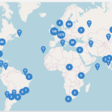
How two entrepreneurs launched a global, open source Internet of Things network – Shareable — www.shareable.net
Voor Trivento schreef ik onlangs een blog over ‘The Things Network’: een open source Internet of Things netwerk van Nederlandse bodem. De laatste jaren laat ik al mijn ‘serieuze’ blogs standaard naar het Engels vertalen. De vertaling van dit stuk werd (in licht aangepaste vorm) afgelopen week doorgeplaatst op Shareable: een lezenswaardige blog waar projecten in de ‘grassroot’ deeleconomie worden uitgelicht.
Contact
Inspiratie opgedaan en advies of duiding nodig over de platformeconomie of op zoek naar een spreker?
Neem gerust contact op via een reply op deze nieuwsbrief, via mail (martijn@deeleconomieinnederland.nl) of telefoon (06-50244596).
The post The potential commodification of workers | Durven workers in de platformeconomie nog te staken? | Heeft BlaBlaCar nog interesse in de Nederlandse markt? appeared first on Seats2meet.



